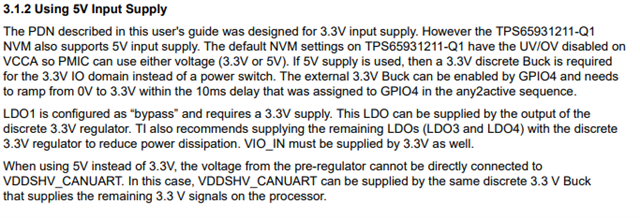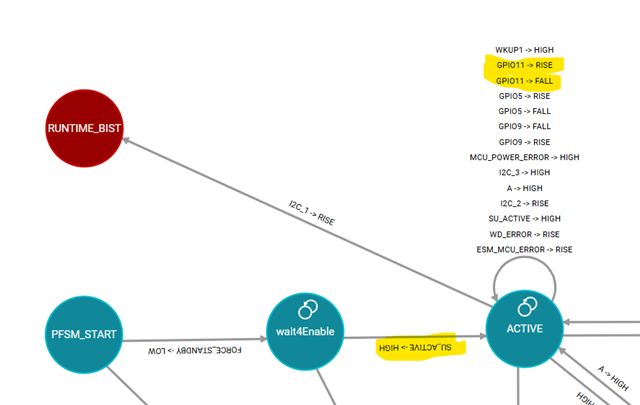Tool/software:
Hi Experts,
Customer did not implement power switch and the reset logic for supporting UHS-I SD card.
So customer cannot provide a low to high to the GPIO11 to enable SD card supply.
In case customer does no use UHS-I speed and the POWER switch to control the SD card supply and the power switch EN logic is not implemented, is there a recommendation to connect GPIO11.
Currently the GPIO11 is left open and the LDO output is not available.
Regards,
Sreenivasa







